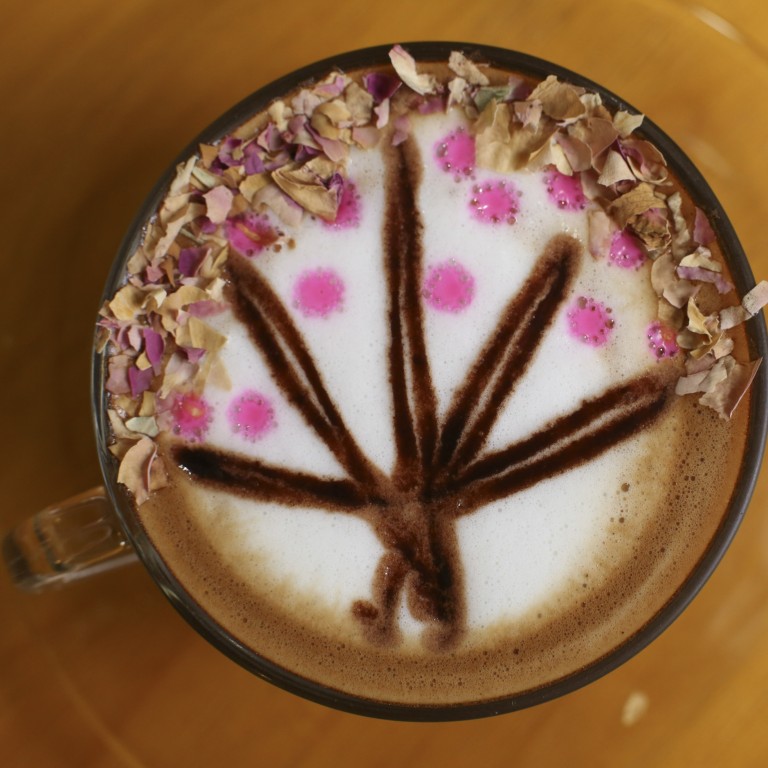
Why are there so many artisan coffee shops opening in Hong Kong? How city’s drinking habits have evolved
- Specialist coffee shops are popping up all over the city, with their baristas, latte art, Dalgona and fancy brews
- Hongkongers used to have simpler tastes, preferring milk tea and the Hong Kong tea-coffee hybrid yuen yeung
Who knew we were in the midst of a caffeine boom when the whole Hong Kong hospitality sector was supposed to be in the doldrums?
Where once stood old neighbourhood vendors and small snack stalls, now there are new and trendy coffee houses, all of them with a beanie-wearing barista putting his or her art school degree to good use on latte foam.
If I sound dismissive of these pretentious cafe owners and staff, I’m sorry, not sorry.
I’m equally disdainful of the customers too. Where do all these deadbeats come from – the laptop guy squatting at a corner table for hours or the wannabe Instagram star styling her selfie oblivious to the inconvenience it is causing everyone else.
When chains like Pacific Coffee and Starbucks first started expanding around the turn of Y2K, there was some scepticism as to whether Hong Kong people would embrace their kind of American-style coffee culture.
As a drink, coffee wasn’t particularly popular then, not compared to local favourites like milk tea and yuen yeung (coffee mixed with strong tea). A cup of Joe was a cheap liquid dose of caffeine that sleepy-eyed white-collar workers grabbed on the way to the desk.

Nobody took notice of the beans and their origin, the roasting method, how they were ground, or the exact temperature and time they were steamed and filtered.
Back then, it was “just black” or with cream – and not even real cream but a tiny carton of “liquid creamer” handed to you with your styrofoam cup.
This inexpensive brew from diners was already a step up from the instant coffee of Taster’s Choice or Folgers that “the new expat guy boss hired said we should get for the office pantry”.
‘Expired products again?’ Starbucks stirs backlash in China
Well, we have come a long way. For a while, it was fashionable at Starbucks to customise your own loopy order, like a “venti salted caramel mocha frappucino, with a pump of toffee nut syrup, double blended with whipped cream”.
As this sort of silliness faded, proper coffee consumption took root. Being a barista is now considered an artisanal craft.
At the same time, social, lifestyle and work habits changed. At first, people bought overpriced coffee to use a cafe’s Wi-fi. Now with mobile data readily available, I don’t know why people would want to sit around a coffee shop for hours.

I understand working from home can get isolating. However, if you have the patience to make sourdough bread, why is it bothersome to grind some beans and brew them in a filtered pot? Why is a Dalgona coffee worth the effort but not an ordinary cuppa?
Capsule machines like Nespresso and Lavazza offer super convenience for a cup at home too, although most brands produce non-recyclable pods that are terrible for the environment. And it’s a frustration for consumers that most brands resist conforming to a standardised capsule.
It’s almost as annoying as having to use different battery chargers for your phone, tablet and laptop.
The sad thing about invasive cafes taking over every corner of every street is they tend to wipe out the biodiversity of a neighbourhood. Before these cafes, a space might’ve belonged to a family business selling local snacks, Chinese desserts, herbal elixirs and turtle jelly, or even to a fruit juicer. A fresh squeezed cup of orange, apple or carrot juice now is very hard to find.
So is there enough demand to keep all the hipster coffee houses open? With so many shops expecting so many HK$60 (US$7.50) mochaccino orders every day, I’m not sure the market can sustain them all. Reality might just kick in for a lot of cafes before their coffee does.

